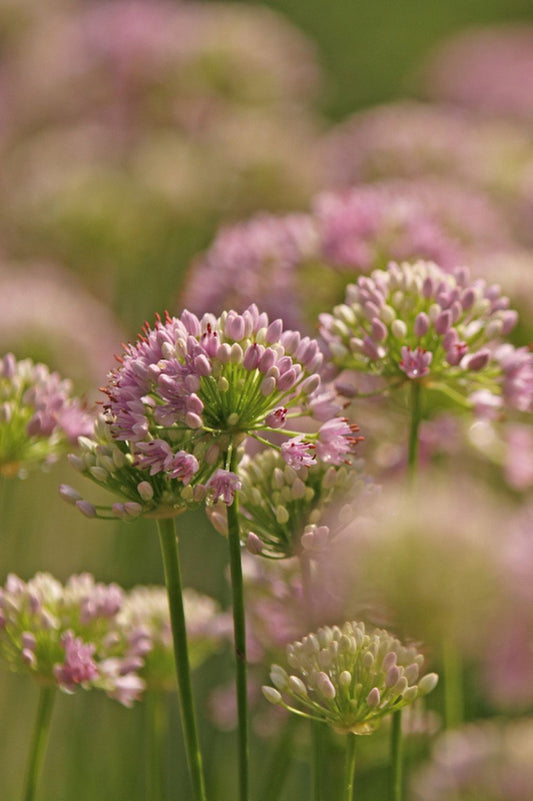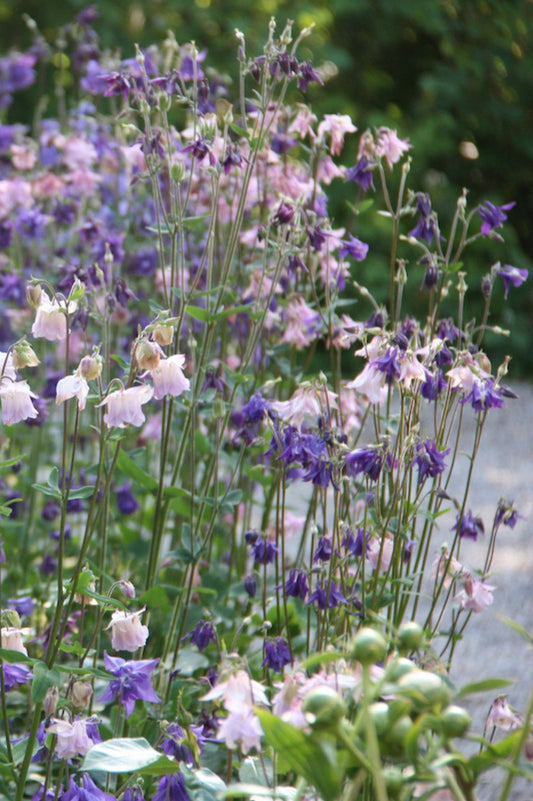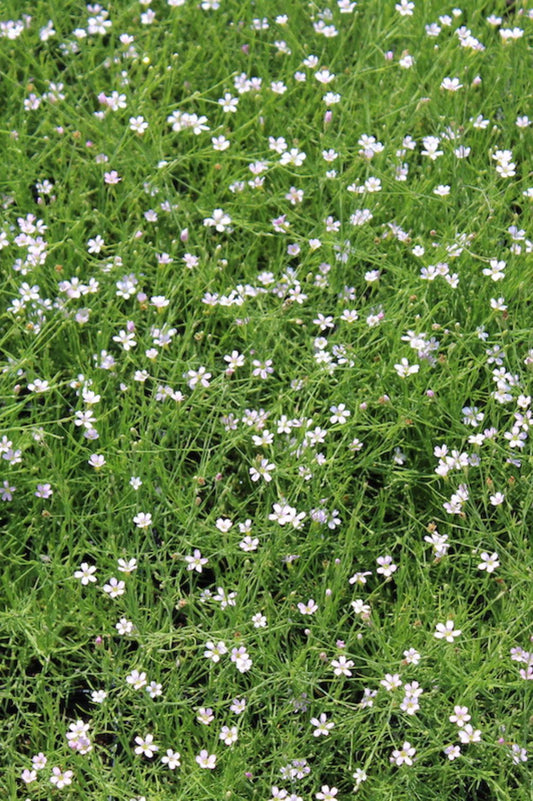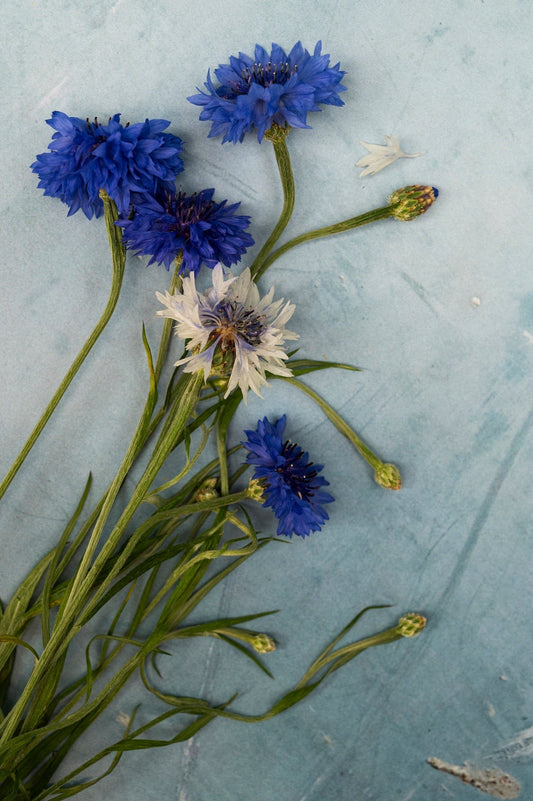MEXICO, CAUCASUS & HOLLAND – But native wildflowers make your garden even more colorful!
With a garden we bring a piece of pure nature into our own four walls – or so we think.
No way! The typical garden, filled with plants commonly offered by garden centers and hardware stores, is essentially a far cry from a truly natural habitat.
Take a close look around your garden. Cosmos grows next to delphiniums, hydrangeas are overshadowed by night violets, tulips and peonies herald the arrival of summer, and so on and so forth. All these magnificently blooming beauties (which I, of course, also have in my garden!) actually come from far away. They left their native habitat long ago and migrated—or rather, were transported by human hands to resettle in our gardens alongside their completely foreign colleagues.
That's fine, and it's a living example of diversity in our flowerbeds. Mexico sits next to Sicily, the Caucasus next to Argentina, the Netherlands next to East Asia – it's blooming all around the world. As in the picture above: cheek to cheek, Southern Europe with Argentina and China. And all of this in Bavaria.
Preserving and promoting native wildflowers
However, despite this wonderful community of different nationalities, we shouldn't completely lose sight of our native plants. Not for patriotic reasons, but because nature is actually the best gardener. She knows which of her creatures have which needs, which thrives best in sun or shade, which prefer sandy or clayey soil. And she also knows who gets along best with whom and who can be useful where.

Native species have settled here without human intervention and can ensure their survival on their own. Over the centuries, they have adapted perfectly to their natural environment and play an important role in the cycle of nature as providers of food for insects, bees, butterflies, and other creatures. Unfortunately, many native plant species* are now threatened with extinction due to the use of pesticides, the sealing of surfaces, and the impoverishment of landscapes – and this, in turn, threatens our colorful diversity of wildlife. According to NABU (Nature and Biodiversity Conservation Union), the area of all German gardens is roughly equivalent to the total area of Germany's nature reserves. This means we are actually obligated to make room for native species in our gardens again. They have another unbeatable advantage: They are much easier to care for, more robust, and less demanding than their friends from distant lands, and they are happy to mingle with the cosmopolitans.

Colorful biodiversity in your own garden
If you're lucky, you might encounter these native species in nature here. You can also promote sustainability and biodiversity yourself by bringing native wildflowers into your garden.
I've listed a few for you here. All of these plants provide a valuable food source for insects. You'll find sowing tips at the bottom of the text.
Arnica – Larkspur – Field bellflower – Bear's bane – Valerian – Wild garlic – Monkshood – Purple loosestrife – Wood anemone – Thistle – Marshmallow – Chamomile – Field holly – Rock pink – Daisy – Common columbine – Coltsfoot – St. John's wort – Corn poppy – Clustered bellflower – Conrade – Cornflower – Dandelion – Lily of the valley – Musk mallow – Viper's bugloss – Peach-leaved bellflower – Rose mallow – Sand pink – Sand thyme – Wood sorrel – Yarrow – Scabious – Common scum – Common foam – Meadow scabious – Knapweed – Meadow sage – Wild mallow – Wild marjoram
Here you can find all native wildflowers in the shop .




TIPS FOR NATIVE WILD PLANTS IN YOUR OWN GARDEN
- One of the most common reasons why wildflowers don't grow well in our gardens is that our soil is too rich in nutrients. Most prefer poorer soil. Therefore, it's best to mix the soil with sand and avoid fertilizing.
- I also recommend growing them in pots. This way, they'll have a head start with a more substantial size and won't be overgrown by weeds or eaten by snails as quickly.
- Pay attention to their location requirements. The sand pink and the rock pink , for example, have their dream location in their names... The rock pink, in particular, grows well in my garden. A spot in the rock garden is especially perfect for them, though.
-
Purple loosestrife loves moist conditions (I have it in a zinc tub – actually, without a hole) and it gives me great joy every year in its "swamp." But it also copes well when it gets drier.
- I'm currently a big fan of medicinal valerian . It grows well pretty much anywhere and, as a tall perennial, looks wonderful in my flowerbeds (and I even have it in a pot).
- With yarrow , you'll notice: the richer the soil, the taller the perennial grows. Keep this in mind when designing your flowerbed!
- You can, of course, also plant them as a wildflower meadow. Please be careful not to sow them too densely—they all need their own space to develop properly. It's best to mix the seeds with sand and then sow them on well-prepared ground (free of weeds and grass).
*Native plants
"Indigenous plants, also called autochthonous plants, are those plant families that are native to a particular area, i.e., that have spread there without human influence and are present and reproduce there permanently. These are distinguished from those plant species that have entered the area through human influence, namely:
- Archaeophytes before 1492
- Neophytes from 1492
- Crops
In many cases, the classification of a plant species into the above categories is very difficult to verify. The seemingly arbitrary separation after 1492 refers to the discovery of America, which enabled increased flora exchange between the Old World and the New World, and actively spread many cultivated plants worldwide. (Source: Wikipedia)

Photo Purple Loosestrife: Sonja Bannick
Photos of native wildflowers: Janina Laszlo/Samen Maier
































